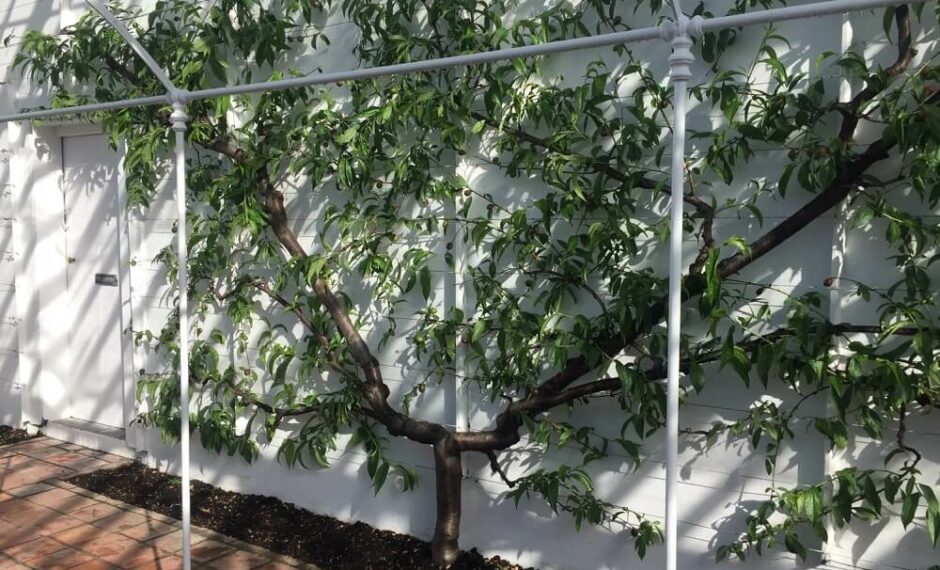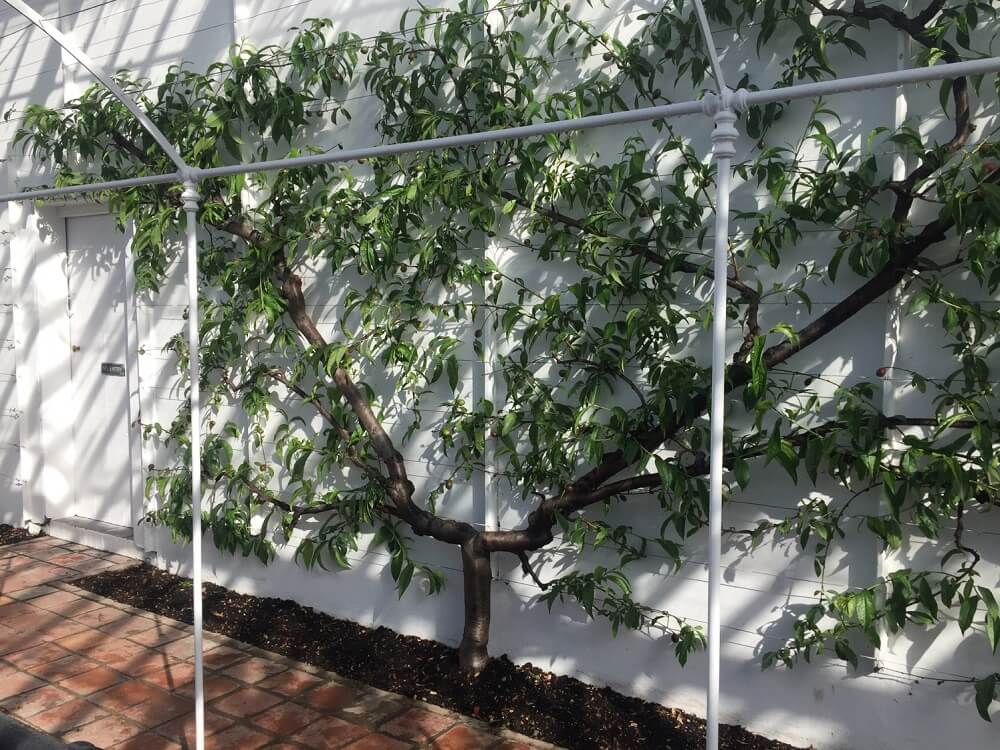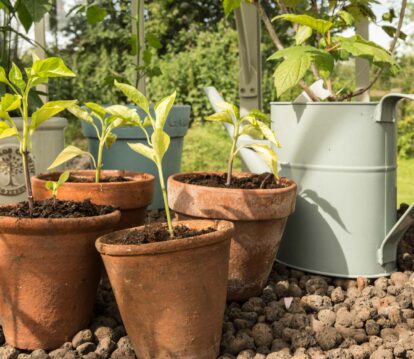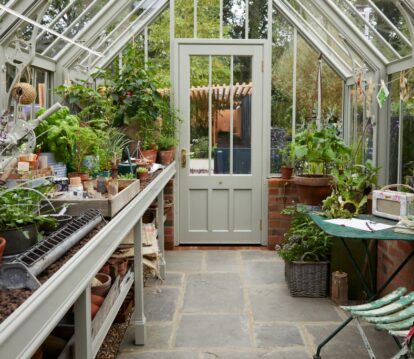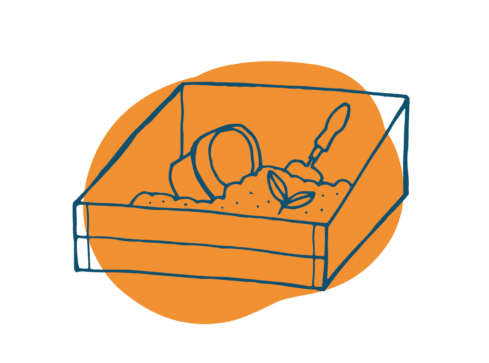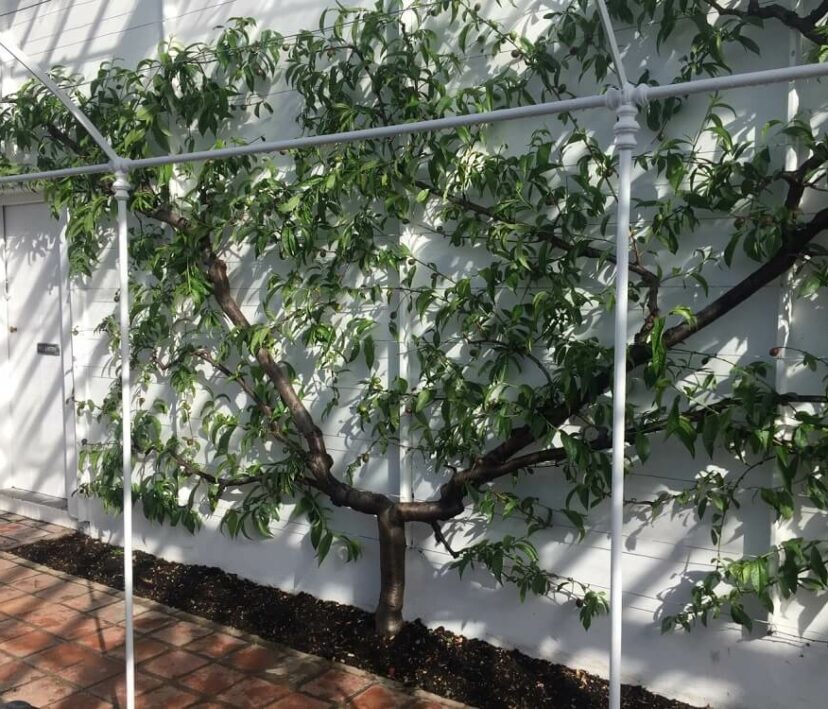
Sarah Wain joined us for our second webinar to take us on a virtual tour from her time at West Dean Gardens, discussing fruit training for a variety of fruits, under glass and outside in the garden.
We have summarised Sarah’s top tips on making sure your trees provide you with an abundance of quality fruit and looks beautiful too.
Nectarines and Peaches
Nectarines and peaches are a beautiful and tasty addition to have in your garden. Optimal growing conditions for these fruits are under glass, protecting the plant from frost and other elements.
Pollination can be carried out by hand to produce even more fruit. Using a lightweight brush such as a makeup or artist brush, dust the pollen onto the pistil to pollinate and carry this out 3 times a week for best results.
 Grapes
Grapes
Dessert grapes are a delicious variety to grow at home and Sarah suggests a 1930s popular export from the Channel Islands called Cannon Hall Muscat.
Pruning of grapes should occur when they reach the size of a fingernail. By removing about half from the collective gives the others more space to grow and thrive. In order to maximise space and not end up with bunches growing too closely together, alternate the growth of the fruit on separate wires.
Apples
If you are considering growing apples to create an orchard, you might want choose varieties that do not all pollinate at the same time but overlap instead. Creating an orchard that blooms at similar times is aesthetically pleasing and helps to cross-pollinate making it easier to maintain.
Training fruit outside
There are a number of different ways to grow and train your fruit – it will depend on the space in your garden and the orientation of the location.
-
Cordons – Cordons allow you to grow a decent amount of fruit even if you are limited on space in your garden. Cordon training is suitable for all apples and pears that carry fruit on their shorter side-shoots. Cordons need shelter and a strong support system to encourage growth and protect them from the British elements. Carry out pruning of your fruit in the summer, preferably August. In some wetter climates, delay pruning to until September when a large bud has formed on the branch tips.
-
Candelabra – Espalier trees can be trained as candelabras, which is a twin stem where each branch has been divided into 4 evenly spaced upright stems. These are ideal for growing against a wall or making a screen. The candelabra system is perfect for any non-stone fruits such as apples or pears because their spurs live for years, producing fruit and flower year after year.


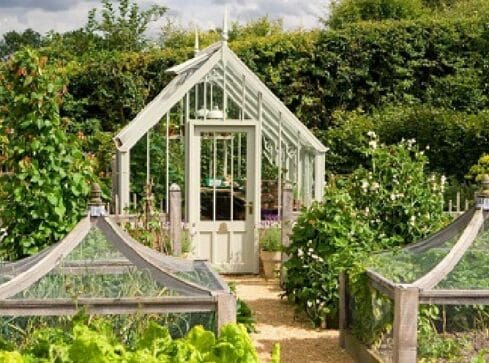

 Grapes
Grapes